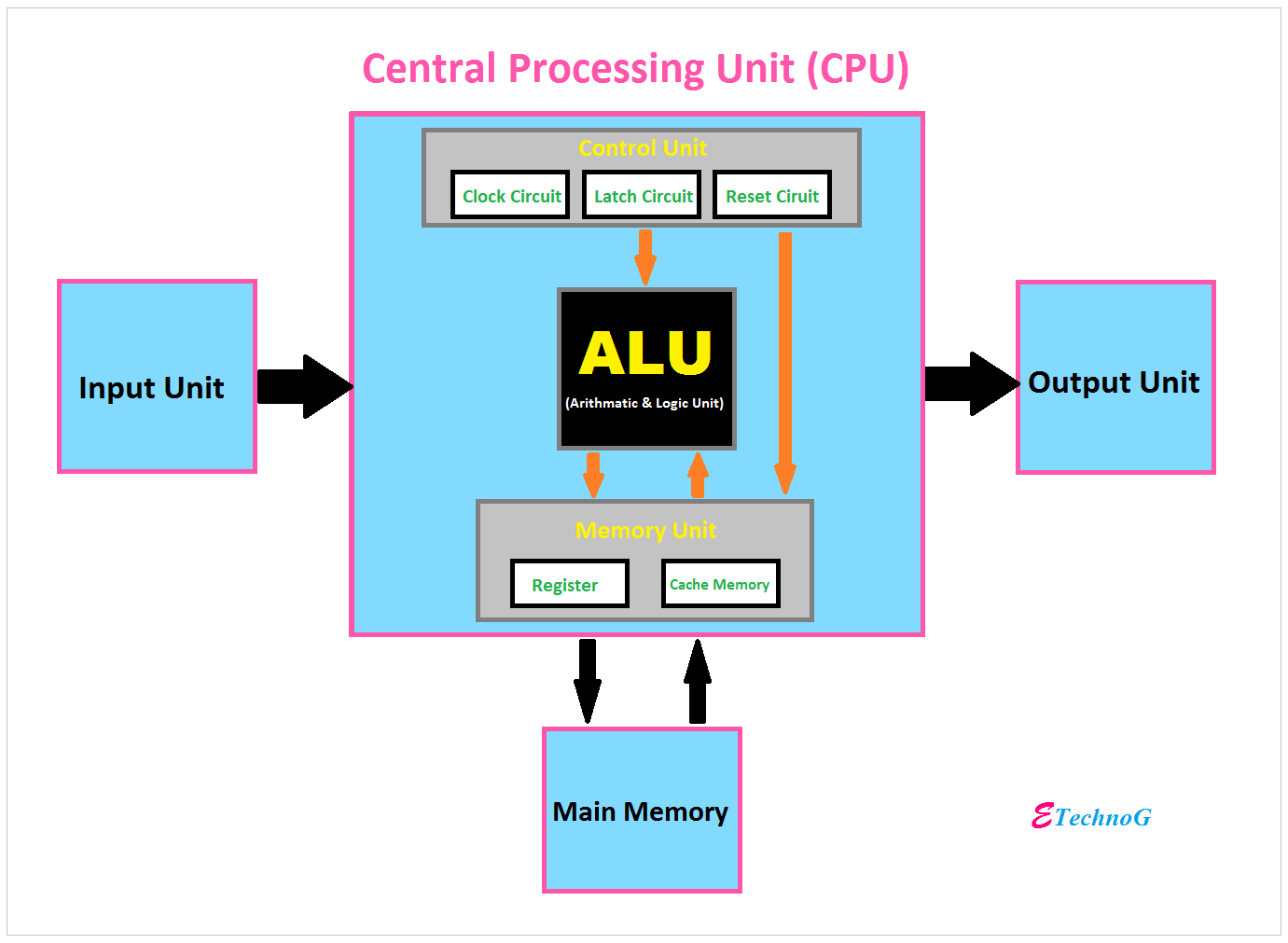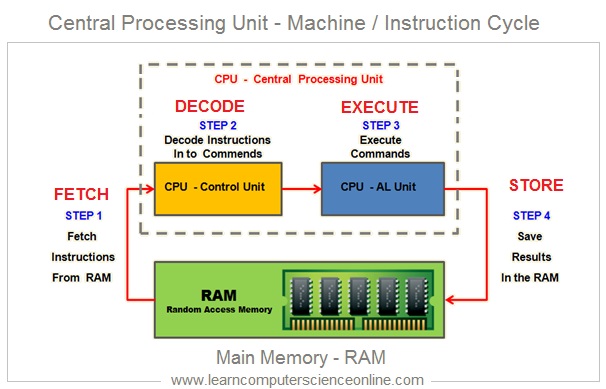Types and Components of Computer Systems
1/30
Earn XP
Description and Tags
This set of flashcards covers key vocabulary terms related to the types and components of computer systems, including hardware, software, and their functionalities.
Name | Mastery | Learn | Test | Matching | Spaced |
|---|
No study sessions yet.
31 Terms
Hardware
The electronic, physical components that make up a typical computer system.
Internal hardware
CPU
Motherboard
RAM or ROM
External hardware
Printer
Keyboard
Mouse
Software
The techniques, methods, commands, and instructions tell the device what to do and how to do it.
The programs which control the computer system and process data.

Central Processing Unit (CPU)
The component that understands and executes hardware and software operations.

Random Access Memory (RAM)
Temporary memory storage, lost after power is shut down, used for currently active data. Volatile
Read-Only Memory (ROM)
Permanent memory storage, non-volatile, used to store configuration data like BIOS.
Backing storage
Required to store significant amounts of data permanently.
Most commonly in the form of Hard disk drives and Solid-state drives.
Internal memory vs backing storage
RAM contents are lost when power is lost, ROM is read-only, and backing storage is permanent even without power.
RAM and ROM are much smaller than backing storage.
RAM and ROM are significantly faster in accessing data than backing storage.
Backing storage is much cheaper than internal memory.
Internal memories are fixed, and backing storage can be fixed or portable.
Internal memories can be directly read by the CPU, while backing storage needs to be moved into the RAM before being read by the CPU.
Input Device
Any hardware that enables data entry into a computer.
Output Device
Any hardware that shows the results of processed data from a computer.
Application Software
Software that provides services allowing the user to perform specific tasks.
Eg spreadsheet, word processor
System Software
Software designed to provide a platform for all other applications to run on.
Eg. Compilers, linkers, device drivers
Compilers
The software translates the High-level language into Machine code (Language Processor).
Linkers
A Software that creates the links between Language processors into workable solutions (Data definition language).
Device drivers
A software that enables the device to work with another, externally connected device.
Operating System (OS)
Controls operation of input, output & backing storage
Supervises loading, running & storage of application programs.
Deals with errors in application programs.
Maintains security of the whole computer system
Maintains a computer log.
Analogue Data
Continuous data that varies smoothly over time.
Digital Data
Data represented in binary form, using discrete values (0 and 1).
ADC (Analogue to Digital Converter)
Hardware that converts analogue signals into digital data.
DAC (Digital to Analogue Converter)
Hardware that converts digital data back into analogue signals.
Dialogue-Based User Interface
An interface that uses voice commands to interact with computers.
useful for people with disabilities. Possible to use it as a security feature because voice recognition could be used to identify a person.
Still unreliable, with many commands not being recognized or needing to be repeated several times (especially if there is background noise). Can be quite complex to setup. User needs to know which commands can be used
Graphical User Interface (GUI)
An interface that uses visual indicators like icons and menus for user interaction.
The user does not need to learn any commands. It is more user-friendly; icons are used to represent applications. A pointing device is used to click on an icon to launch the application, this is simpler than typing in commands.
This type of interface uses up considerably more computer memory than a CLI interface. The user is limited to the icons provided on the screen. Needs a more complex operating system.
Command Line Interface (CLI)
A text-based interface where users type commands to communicate with the computer.
Not restricted to pre-defined options. Possible to alter computer configuration settings.
Needs to learn many commands for basic operations. All commands need to be typed in, which is time-consuming. Very error prone, as commands must have correct format, spelling etc.
Gesture based user interface
relies on human interaction by the moving of hands, head or even feet.
Replaces mechanical input devices. No physical contact is required. Very natural interface for a human operator. No training is needed to interface with the computer.
It is possible for unintentional movement to be picked up. Only works near the camera or sensor (maximum of 1.5 meters). May only accept a limited number of movements (for example, it may take several attempts to determine exactly what finger movements are recognized).
Types of computers
Desktop computers
Laptop computers
Smartphones
Tablets
Phablets
Laptops are the most expandable of these devices, while smartphones are the most portable. Tablets and phablets fall somewhere in between, offering a balance of portability and expandability. The choice of device will depend on your specific needs and use case.
Emerging Technologies
New inventions or innovations that may significantly impact society and industries.
AI
a machine or application which carries out a task that requires some degree of intelligence.
Driverless vehicles, Robots (bomb disposal), Predicting weather, Robotic research (helping disabled), Operate machinery
unemployment, Dependency on technology could lead to problems in the future, deskilling.
Extended reality (XR)
combined real and virtual environments
Augmented reality
merger between the virtual and physical (real) world; it lays objects onto pre-existing objects.
e.g., Pokémon GO!, healthcare (better understanding of human body), retail
Virtual reality
enables an entirely new world to be created, unlike AR, which has no link to the actual surroundings of the user. It requires the user to be specially equipped with a VR headset, joystick, and headphones.
Eg. Military applications, special effects in movies, scientific visualisation